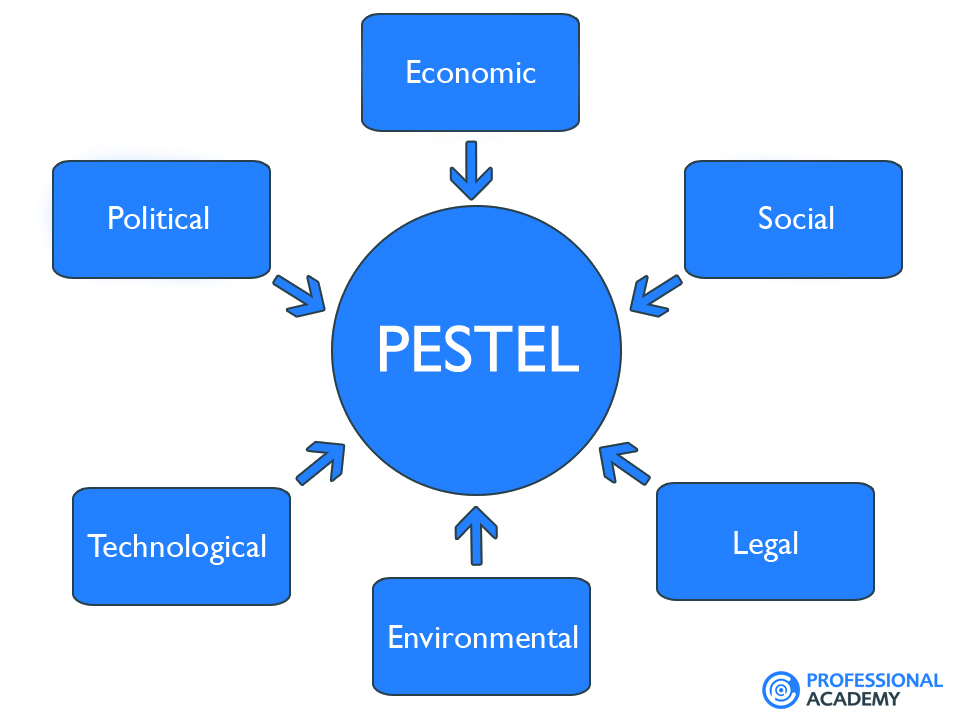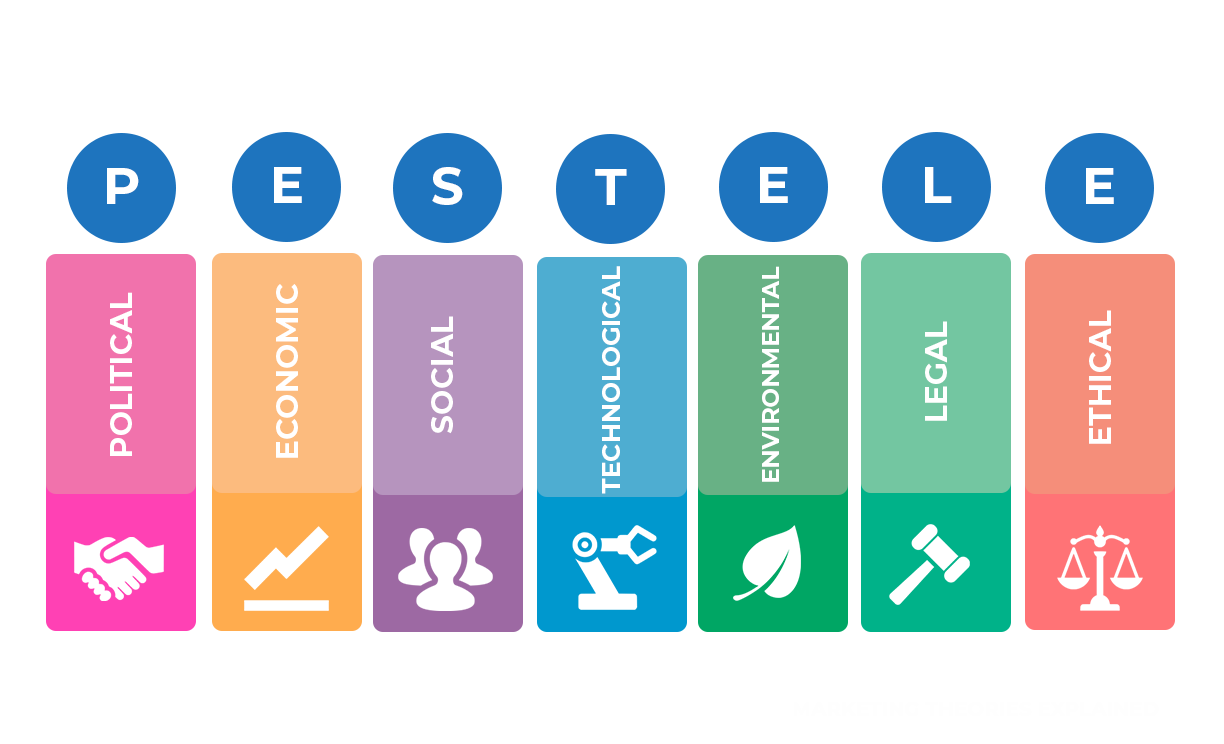



Visit our Marketing Theories Page to see more of our marketing buzzword busting blogs.
Welcome to our Marketing Theories series. In this post we will be looking at the PESTEL Analysis in a bit more detail.
A PESTEL analysis or more recently named PESTELE is a framework or tool used by marketers to analyse and monitor the macro-environmental (external marketing environment) factors that have an impact on an organisation. The result of which is used to identify threats and weaknesses which are used in a SWOT analysis.
Lets look at each of these macro-environmental factors in turn.

All the external environmental factors (PESTEL factors)
These are all about how and to what degree a government intervenes in the economy. This can include – government policy, political stability or instability in overseas markets, foreign trade policy, tax policy, labour law, environmental law, trade restrictions and so on.
It is clear from the list above that political factors often have an impact on organisations and how they do business. Organisations need to be able to respond to the current and anticipated future legislation, and adjust their marketing policy accordingly.
Economic factors have a significant impact on how an organisation does business and also how profitable they are. Factors include – economic growth, interest rates, exchange rates, inflation, disposable income of consumers and businesses and so on.
These factors can be further broken down into macro-economical and micro-economical factors. Macro-economical factors deal with the management of demand in any given economy. Governments use interest rate control, taxation policy and government expenditure as their main mechanisms they use for this.
Micro-economic factors are all about the way people spend their incomes. This has a large impact on B2C organisations in particular.
Also known as socio-cultural factors, are the areas that involve the shared belief and attitudes of the population. These factors include – population growth, age distribution, health consciousness, career attitudes and so on. These factors are of particular interest as they have a direct effect on how marketers understand customers and what drives them.
We all know how fast the technological landscape changes and how this impacts the way we market our products. Technological factors affect marketing and the management thereof in three distinct ways:
These factors have only really come to the forefront in the last fifteen years or so. They have become important due to the increasing scarcity of raw materials, pollution targets, doing business as an ethical and sustainable company, carbon footprint targets set by governments (this is a good example where one factor could be classed as political and environmental at the same time). These are just some of the issues marketers are facing within this factor. More and more consumers are demanding that the products they buy are sourced ethically, and if possible from a sustainable source.
Legal factors include - health and safety, equal opportunities, advertising standards, consumer rights and laws, product labelling and product safety. It is clear that companies need to know what is and what is not legal in order to trade successfully. If an organisation trades globally this becomes a very tricky area to get right as each country has its own set of rules and regulations.
The most recent addition to PESTEL is the extra E - making it PESTELE or STEEPLE. This stands for ethical, and includes ethical principles and moral or ethical problems that can arise in a business. It considers things such as fair trade, slavery acts and child labour, as well as corporate social responsibility (CSR), where a business contributes to local or societal goals such as volunteering or taking part in philanthropic, activist, or charitable activities.
Big brands often take part in CSR - examples include:

As part of our Marketing Theories Live Events series, we have covered the PESTELE analysis in a webinar with marketing pro and CIM tutor Peter Sumpton. Check out the recording and get a valuable insight into the model in more detail.
If you're more of a visual learner, you can also find a short animated video on YouTube outlining how to use the PESTELE analysis.
After you have completed a PESTEL analysis you should be able to use this to help you identify the strengths and weaknesses for a SWOT analysis.
We hope that you have found the above information useful. The PESTELE analysis is taught in our CIM courses.
If you would like help referencing this blog, check out our Harvard Referencing Blog.